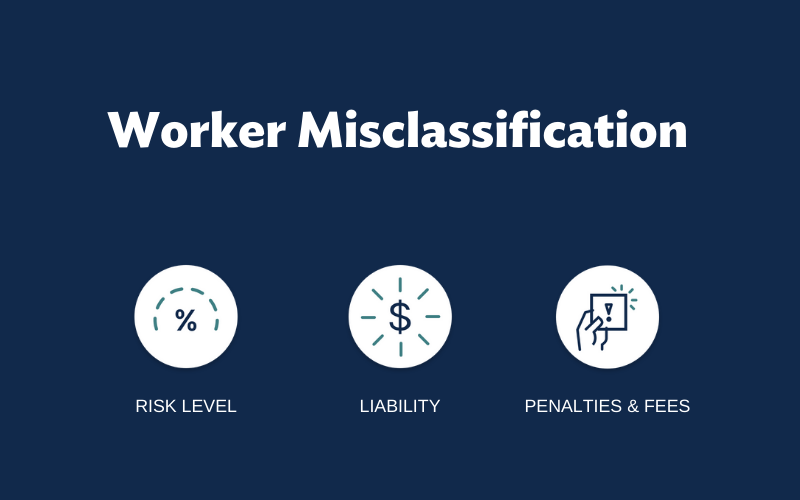Avoiding Employee Misclassification: Protecting Your Business and Workers

Employee misclassification is a critical issue that can have severe consequences for both businesses and their workers. Not only can it be considered wage theft, but it can also put your business at risk of an IRS audit for back taxes, severance, and health care coverage for misclassified workers. Additionally, misclassification can lead to legal fees, reputation damage, and even criminal and civil penalties, whether the misclassification is intentional or accidental. In this blog, we'll explore the importance of proper classification, common misclassifications, their fallout, and steps businesses can take to mitigate risks.
Understanding Misclassification and its Consequences
Employee misclassification occurs when workers are inaccurately classified as independent contractors rather than employees. This misclassification deprives workers of essential protections and benefits, such as minimum wage, overtime pay, unemployment insurance, workers' compensation, and access to health care coverage and retirement plans. Furthermore, misclassification can result in significant financial and legal liabilities for businesses, including back taxes, severance payments, and penalties for non-compliance with labor laws.
Common Misclassifications and Fallout
- Exempt vs. Non-Exempt Employees: Misclassifying employees as exempt from overtime pay when they should be considered non-exempt can lead to wage theft claims and legal actions. Employers may be required to pay back wages, penalties, and legal fees, in addition to facing reputational damage.
- Freelancers vs. Employees: Treating workers as freelancers or independent contractors when they should be classified as employees can result in disputes over unpaid wages, taxes, and benefits. Businesses may face IRS audits, back taxes, and penalties for misclassification, along with legal fees and reputational harm.
- Temporary Workers: Misclassifying temporary workers or seasonal employees as independent contractors to avoid providing benefits or complying with labor laws can lead to legal disputes and financial liabilities. Employers may be required to pay back wages, provide benefits retroactively, and face penalties for non-compliance.
Mitigating Risks and Ensuring Compliance
To prevent misclassification and protect both businesses and workers, it's essential to take proactive measures:
- Annual Classification Reviews: Worker roles can evolve over time, as do the rules around worker classifications. It's crucial to review each worker's classification annually and adjust as needed to ensure compliance with current regulations.
- Consultation with Compliance Firms: Working with a firm that specializes in independent contractor compliance and engagement can help companies meet compliance standards, reduce misclassification risk, and successfully manage independent workers.
- Stay Informed: Payroll processing can be challenging, especially for small-to-mid-sized businesses. Staying informed of the latest payroll laws and regulations can help avoid costly mistakes and penalties. According to the IRS, nearly 30% of employers make payroll errors each year, with the average penalty for an incorrect filing being $845
.
Conclusion
Employee misclassification poses significant risks to businesses and workers alike. By understanding the importance of proper classification, recognizing common misclassifications, and taking proactive steps to ensure compliance, businesses can protect themselves from financial liabilities, legal penalties, and reputational damage. Stay informed, review classifications annually, and consider seeking assistance from compliance experts to mitigate risks and foster a fair and compliant workplace for all workers.
You might also like




